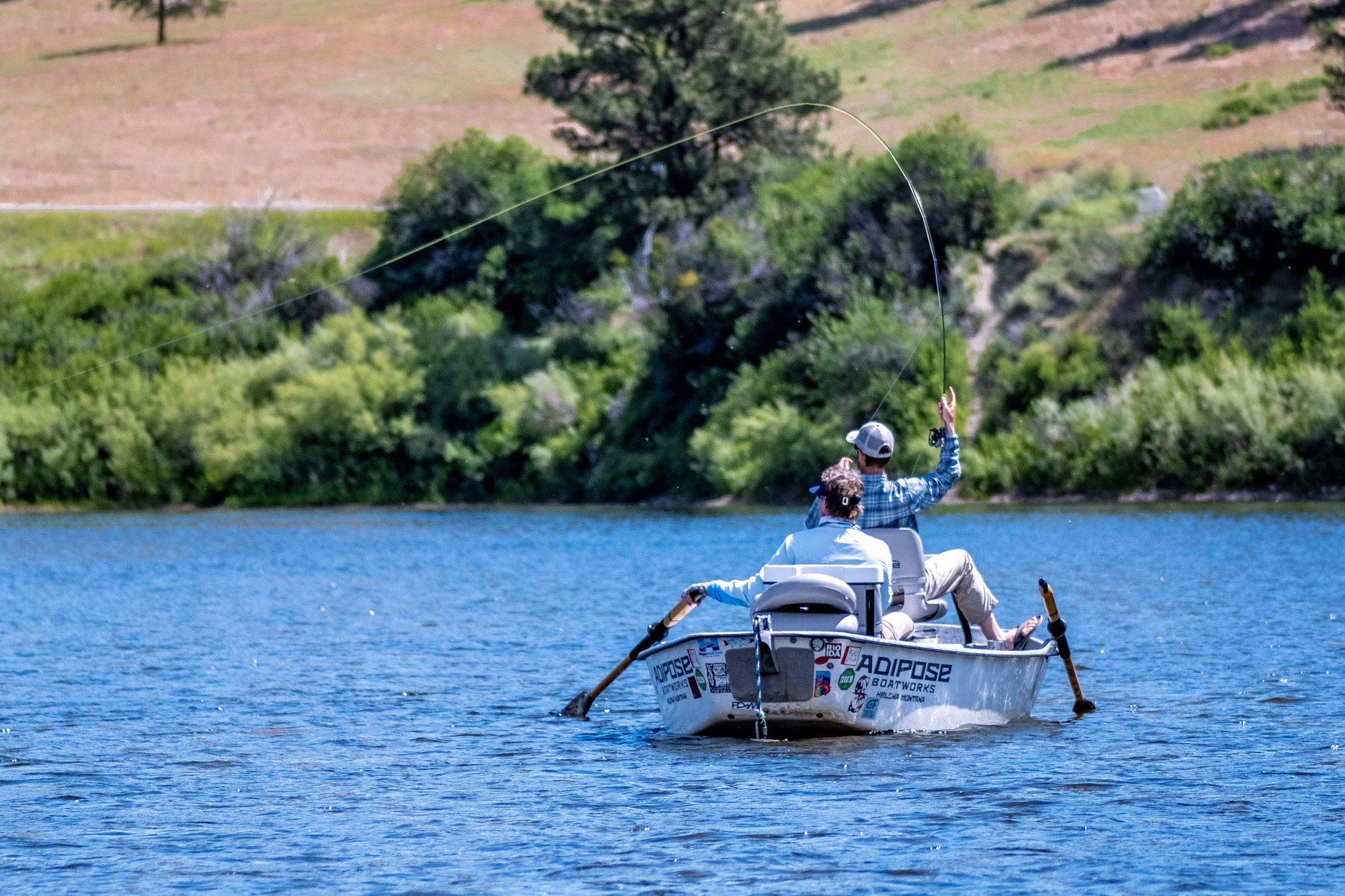[vc_row][vc_column][vc_column_text]August, typically some of the most productive attractor fishing of the year on the Missouri. And because afternoon hatches can be slim, it’s often the only real dry fly option. Hard to cast to feeding fish when you can’t find any.
We’re talking about “hopper fishing”, but also throwing other terrestrials like ant and beetle patterns, damselflies, and traditional attractors like the good old Parachute Adams. It doesn’t matter if you choose a Morrish Hopper or a Purple Haze, where you throw it is the key to catching fish.
CONDITIONS
My favorite scenario for good “blind dry” fishing is a strong morning Spinner fall to get them looking up, then a light afternoon SW breeze after lunch. The breeze knocks a few more terrestrials in the water and provides a little cover for the fish in the high sun. It also helps disguise leaders, tippets and crappy casts.
PATTERNS
Everyone loves to smack ‘em on hopper patterns, but if you really have it dialed, I’ve always felt smaller flies will put more fish in the net. I like the Purple Craze or Parachute Adams, most high floating Ant patterns, small Cricket’s, CDC Caddis, and Callibaetis Cripples like the DOA or any of Harrop’s Callibaetis cripples. If there are a decent amount of residual spinners left from the morning, I’ll blind fish a Hi-vis CDC Spinner. And sure, I use hoppers as well.
WHERE
Not on the bank, is where. Well sometimes on the bank, but more often I’m looking for that faster water that’s between 1 and 4 feet deep. I don’t care if it’s a sunken island in the middle of the river, or a riffle breaking off the top of an island. I’m looking for a broken surface moving quickly. Not always easy to find on the Missouri in August. And while some banks are great, many are too shallow, too slow and too warm.
I also like to fish well out off of the downwind banks that look like great hopper territory. No secret here, as most western rivers have a few of those banks where the alfalfa field runs right up to the river. Hopper habitat for sure. And those big Missouri winds blow all kinds of bugs – both terrestrial and aquatic – well out into the river.
PRESENTATION
I like to fish my Fly way in front of the boat. As far as my angler can consistently cast, especially if I’m using a hopper pattern. You need to do some line management to make sure you don’t have too much slack out there to set the hook. This can especially be a problem with a strong downstream wind. Pay attention!
Giving your fly a little – or a lot – of twitch can be productive, and not just with hopper patterns. You need to do this with some confidence and stick to it. An erratic pattern, and just enough to see some “rings” come off your fly usually does the trick. I typically employ this technique on glassy surfaces and slower currents.
LONG TIPPET
You’ve heard Mark and I preach long tippets, and attractor fishing is no exception. Keep that leader long and your Tippet longer. I prefer at least 4’ of Tippet when hopper fishing. If you’re using a bulky, wind resistant pattern, leader choice/construction can be critical. Use a leader with a long butt section and quickly tapered front end.
Conditions are excellent for attractor fishing right now. The river has pushed back up over the 5K mark, and water temps are ranging between 61 and 64 degrees at Holter Dam. The fish are healthy, but after months of getting picked on by skilled anglers, they aren’t stupid. If you’re not getting them, change something. Different water, center of the river, and often in my experience, 10 or 15 feet further. Good luck.[/vc_column_text][/vc_column][/vc_row][vc_row][vc_column][us_image image=”36592″ size=”shop_catalog” align=”center”][/vc_column][/vc_row]

One of John Fords greatest films, “the searchers” and this is a special scene, where Wayne walks from the dark inside to the grander of the SW.